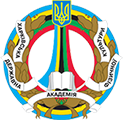- Головна сторінка
- →
- Періодичні видання
- →
- Наукові журнали
- →
- Перегляд матеріалів
JavaScript is disabled for your browser. Some features of this site may not work without it.
Morphofunctional characteristics of single combats athletes as factors of success
Podrigalo, Leonid; Podrihalo, Olha; Jagiello, Wladyslaw; Podavalenko, Olexandr; Masliak, Irina; Tropin, Yuri; Mameshina, Margarita; Galimskyi, Volodymyr; Galimska, Inna
Дата:
2021-10-30
Короткий опис(реферат):
Background and Study Aim. The aim of the article is a comparative analysis of the morphofunctional characteristics of athletes of various types of martial arts as factors of success. Material and Methods. The study participated students involved in martial arts (n = 29; age - 17.53 ± 0.15 years). The first group (group 1 - wrestlers) included judo, sambo, wrestling athletes (n = 12, age - 18.58 ± 0.38 years). The second group (group 2 - athletes of percussion martial arts) included athletes of karate, taekwondo (GTF), taekwondo (WTF), (n = 17; age - 18.12 ± 0.26 years). Determined 46 morphofunctional indicators: length and body weight; chest circumference in a pause, on inhalation and exhalation; length and circumference of the segments of the upper and lower extremities; wrist dynamometry. A goniometric study of the range of motion in the joints of the upper extremities was carried out. The dynamic grip strength was determined by the maximum frequency of hand squeezing in 10 seconds. To characterize the data, the median was determined - the first (25%) and third (75%) quartiles. Differences between groups were assessed using nonparametric criteria of Wilkinson-Mann-Whitney (U) and Rosenbaum (Q). Results. Athletes in group 1 had a greater interquartile range compared to athletes in group 1 in the following indicators: body weight; chest circumference in a pause, on inhalation and exhalation; hand dynamometry of the right and left hands; maximum frequency of the hand grip in the impulse mode with the left hand; shoulder width; circumference of the shoulder, forearm, thigh and lower leg. Athletes of percussion martial arts were characterized by large values of the shin length. The amplitude of abduction and adduction in the right wrist joint, the amplitude of abduction in the left wrist joint was greater in the wrestlers. Athletes of percussion martial arts had a large amount of extension of the left wrist joint, flexion of the right elbow joint, extension and abduction of the right shoulder joint. Conclusions. Analysis of morphofunctional indicators of athletes of various types of martial arts confirmed the specific effect of the sport on the body of athletes. The features that are the factors of success are highlighted. For wrestlers, these include hand strength in various modes. It allows to implement quickly and efficiently grip. This is the basis for a successful wrestling technique. Sufficient development of the muscles of the limbs ensures the execution of throws in wrestling. The lengthened calf size contributes to a more effective kick in martial arts. Goniometric features of movements reflect the possibility of high-quality gripping, striking or blocking. The used morphofunctional indicators can be applied to predict the success of athletes in various types of martial arts.
Долучені файли
Даний матеріал зустрічається у наступних розділах
Пошук
Перегляд
-
Всі матеріали
-
Колекція

